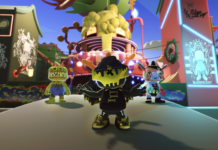Originally released in Japan back in October 2012, Bravely Default is finally set for local release February 7th. It’s been a long time coming for Square Enix’s newest turn-based JRPG. Many have championed for a local release, citing its similarities to the Final Fantasy titles of old, high sales, critical acclaim, and shortage of JRPGs on the 3DS handheld. After the rising popularity of the 3DS during the Year of Luigi, it made sense for Nintendo to publish the game locally.
Finally, here we are, under a month to go before official release and many hours put into the demo that was made available recently on the Nintendo eShop. The demo itself focuses more on the game’s combat than story, but this is perfectly okay: the combat hooks you in with its fresh take on turn-based action. The result is a strategic grind that could potentially wear itself out, but feels highly enjoyable in short dosages.
My party of four was tasked with various fetch quests: gather ten of these, eight of those. Venture into the dark forest, the spooky cave, or the mysterious tower. These are hardly genre breaking ideas, but again, the demo isn’t meant to do that. Instead, we’re guided into what we can expect when Bravely Default launches next month: lots of turn based combat, lots of jobs, and lots of decisions. Choosing jobs for each character is important, since you’ll gain job experience in addition to your character's experience. Leveling up your job gives you access to various abilities, allowing you to mix and match to your heart’s desire.
The questing certainly wasn’t rewriting any genre notions. Granted, it wasn’t supposed to. That’s where combat comes in. I’ve already briefly mentioned the jobs in the previous paragraph, but it’s really amazing to see the possibilities they open up. One character has the capabilities to examine an enemy, learn its weakness and then unleash the appropriate spell on the following turn. Another possibility is raising your defensive stats for battle before instructing that character to prepare for devastating counter attacks. This allows players to create characters that cater to their playstyle.

The showpiece of the game’s combat system involves Brave and Default, which only makes sense seeing as the game is called Bravely Default. Instead of attacking or using items, characters can be instructed to default. They’ll take a defensive stance and gain a battle point. You can then use these battle points with the Brave option, allowing characters to unleash repeated attacks. Store these battle points becomes an intricate part of combat strategy. It helps, too, that each enemy has their own tricks up their sleeves. A natural instinct of players may be to store up on defaults before unleashing a brave, but that isn’t always a smart thing to do. A handful of enemies in the game’s demo have had a tendency to multiply in numbers. If you keep defaulting, the odds could continue to stack against you.
Like the rest of combat, you’ll have to assess each situation and decide when the best time to store battle points will be. This results in gameplay coming full circle: you’re thinking about what jobs to mix and match, thinking about what abilities from these jobs to use, and thinking about whether or not you should store your battle points to make those abilities most effective. It’s pretty nifty to see everything come together. If the rest of the game can follow suit, 3DS owners are in for a treat.










